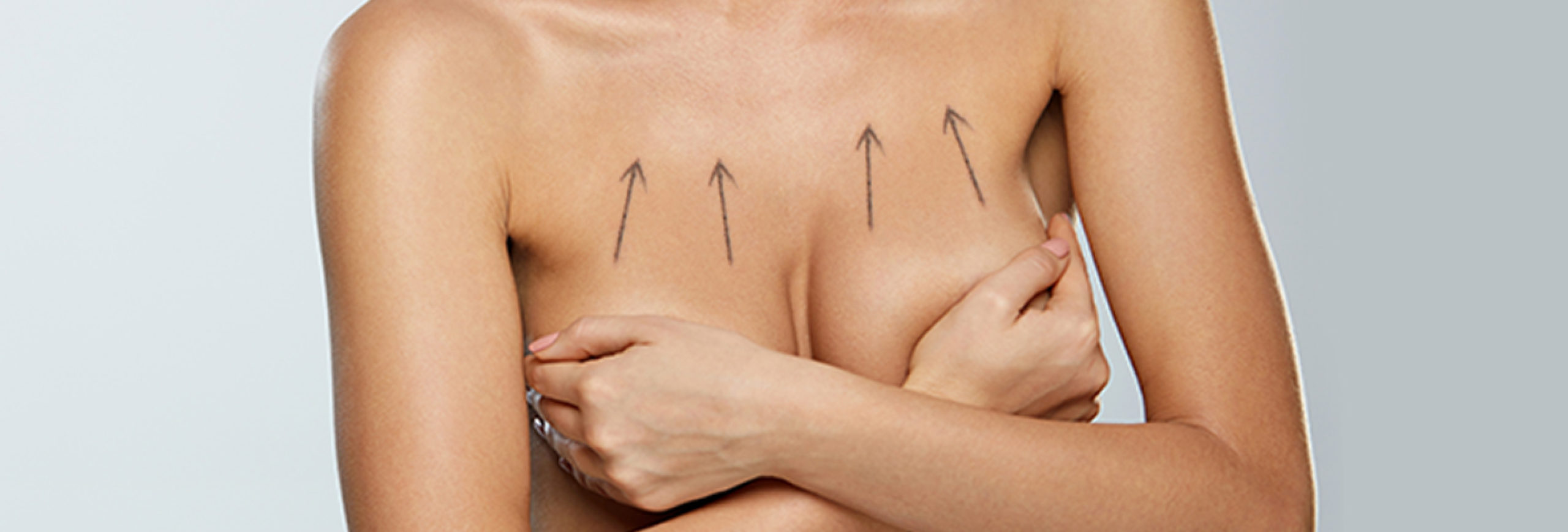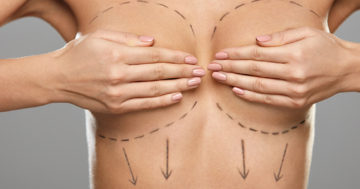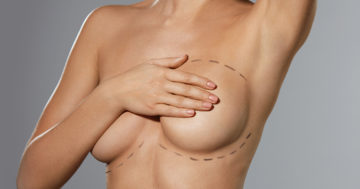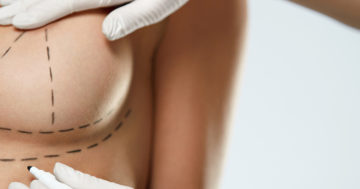Breast Lift
Surgical Procedure
During surgery, the surgeon removes excess skin and tightens the remaining skin. The surgeon starts by assessing the required lift and fullness needed to achieve the desired result. This is done by marking a new nipple position. Using a scalpel, the surgeon then makes an incision along the pre-marked lines and separates the skin from the tissues below. The excess breast fat is then removed, the nipple relocated to its new position and finally the new breast shape is reconstructed. The incision is usually made around the nipple and under the surface of the breast, like an upside down T, however a different technique may be used depending on the degree to which your breasts sag.
If you decide to have implants with your breast lift, they will be placed directly under the breast tissue or chest muscle.
1 NIGHT
4 - 6 HOURS
GENERAL ANAESTHESIA
Pre Operative Care
 Before surgery please inform your surgeon of any allergies, all medical conditions, and any medication that you are taking (both prescription and non-prescription).
Before surgery please inform your surgeon of any allergies, all medical conditions, and any medication that you are taking (both prescription and non-prescription).  To eliminate the chance of post op. bleeding you should avoid aspirin and any medication containing aspirin or brufen for two weeks prior to surgery.
To eliminate the chance of post op. bleeding you should avoid aspirin and any medication containing aspirin or brufen for two weeks prior to surgery.  You should also not smoke for 2 weeks prior to surgery as smoking can affect your reaction to the anaesthetic and slow down the healing process.
You should also not smoke for 2 weeks prior to surgery as smoking can affect your reaction to the anaesthetic and slow down the healing process.  Patients that suffer from hypertension must inform the surgeon prior to surgery. In your consultation you should discuss your expectations of the outcome of the surgery and listen to the surgeon’s opinion. You will probably be required to send photos of your breasts to the surgeon prior to the consultation. This will enable the assessment and also serve as a reference following surgery.
Patients that suffer from hypertension must inform the surgeon prior to surgery. In your consultation you should discuss your expectations of the outcome of the surgery and listen to the surgeon’s opinion. You will probably be required to send photos of your breasts to the surgeon prior to the consultation. This will enable the assessment and also serve as a reference following surgery.Package Price

Post Operative Care
When you wake after surgery you will be wrapped in elastic bandages, gauze dressings and a surgical bra. A small tube may be placed in each breast to drain blood and fluids for the first day or two.
The extent of the post operative swelling and bruising depends on whether you tend to bruise or swell easily. Every person is different. Application of cold compresses or ice packs will reduce swelling and relieve discomfort.
A couple of days after surgery the pressure bandages will be removed. The surgical bra must be worn at all times for several weeks, until the swelling and bruising subsides, or until your surgeon advises you otherwise. You should only remove the surgical bra to bathe and to wash the garment.
Usually, sutures will be removed in the first week. Sometimes the surgeon will use dissolvable sutures. If the breast skin is very dry following surgery, a moisturizer can be applied several times a day. Vitamin E cream is extremely effective and also helps the scarring to heal, however the suture area must be kept dry at all times, particularly after bathing.
For the first few months it is important not to place tension on the wound by performing strenuous activities like lifting or stretching your arms above your head, as this may increase scarring by stretching the tissue. You will need assistance to carry your groceries or hang your washing !
Your surgeon will try to ensure that your incisions as subtle as possible, however it is important to remember that the scars are extensive and permanent. They may be red for months, and then slowly become fainter, eventually fading to thin white lines. In most cases the scars are positioned so that they would not be seen if you wear low-cut tops and dresses.
Recovery usually takes about two weeks. Most people are back to work within three weeks.
Risks and Complications
Risks are inherent to any surgical procedure. The most common risks are swelling, bruising, bleeding, infection, fluid, scarring, numbness, or a change in sensation to the nipple. The most common risk particular to this surgery is damage to the nerve and blood supply of the nipple. In some cases this could lead to a loss of feeling in the nipples, however a breast lift does not prevent future breast-feeding as a breast reduction can.
Scars will fade gradually but nipple numbness may take up to 12 months before sensation returns.
Reduction Mammaplasty Vs Liposuction
If the breasts are not too large and the skin has good elasticity then liposuction may be an alternative. This is especially useful in women who wish to avoid scars. It is possible that this technique may preserve the ability to breastfeed. This technique has become the most common way to perform breast reduction on a patient who is about a DD size. Very large breast which hang low require the conventional method of breast reduction.



